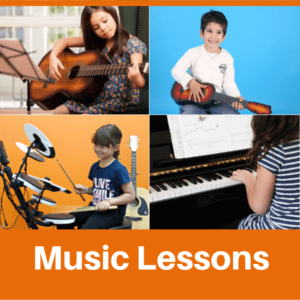
Comparing and contrasting food is a great way to ask exploratory open-ended questions about how a food engages our senses, and later transition to questions on taste. Encourage curiosity and critical thinking by listing observations and making predictions about the squash varieties before you start cooking. Here are some examples from our recent Urban Farming & Cooking Class:
Prompts for Observations:
- Knock on all three – do they sounds different?
- Do they sound full or like there is an empty space within?
- Feel texture – how do the surfaces differ? How are they similar?
- What do they smell like? Do they remind you of anything else?
- Do we have any hints on how it grows (inside out or outside in), or where it grows from?
- What could the hard skin (rind) protect it from?
Prompts for Predictions:
- What do we think the inside texture will be?
- Will they be the same? Will they be different?
- Will there be seeds inside? Do we think they will all be the same size? Will the seeds be hard or soft?
- How many seeds do we think there are within each one?
- Do we think one squash grows from one seed, or many grow from one seed?
- Do we think they grow on a tree, a bush, a vine, or in water?
- What colour do we think each will be inside?
- Will they be the same as the outside, or as each other?
- Do we think the colour will change as they cook?


The Recipe – Roasted Summer Squash
The first step in any recipe:
- Wash your hands! Cooking together is a great way to reinforce good hygiene habits. As well it’s a good idea to tie all long hair into a bun or pony tail so no hands are accidentally touching their face as they work.
Ingredients & Tools – note: you can roast these on a parchment lined baking sheet or within a muffin tin. We wanted the maple flavour to infuse with the squash, however this is entirely preference based.
*Preheat oven to 425°F
- Muffin tin (or baking sheet and parchment paper)
- Mixing bowls
- Winter Squash – we used Acorn Squash, Spaghetti Squash, and Butternut Squash (Delicata would be a great addition as well if you have this available)
- Olive Oil
- Salt
- Pepper
- Maple Syrup or brown sugar
- Optional:
- Garlic powder/minced garlic
- Fajita spice pack (add to separate mixing bowl to contrast squash flavour profiles and bake in separate muffin tins)
Steps:
- Chop up butternut and acorn squash and 2-inch pieces for children to pull seeds and string bits off (skin can be pealed/cut off, or left on)
- Chop up spaghetti squash (preferred skin off, however you can leave on)
- Add squash to mixing bowl and have child add a capful of olive oil, capful of maple syrup (or ½ tbs of brown sugar), grind in salt and paper, and add optional spices as desired
- Mix everything together until all squash is evenly coated
- Bake for 30-40minutes (depending on oven)
We learned a lot of cool facts in class about how winter squashes grow, but we always love seeing the growing process in action. Before we watch, we make a prediction of how many days we think it will take to grow. Here’s a video of a butternut squash plant flowering and then growing a squash: https://www.youtube.com/watch?v=qgn2Wku-X7w

Questions & Prompts:
- How would they describe the flavour – we try to engage in the five core flavour profiles: salty, sweet, sour, umami and bitter
- Where are these tastes on their tongue? Do they change as time goes on?
- What vegetable tastes similar? Or are these completely new tastes?
- What’s the difference between the tastes of the various ingredients?
- What is the texture like? Is it crispy, mushy, crunchy, hard, soft, moist, dry?
- How did the texture change from how they were raw?
- What predictions did we make that were right? What were different?
Fun Facts and Health Benefits:
- Zucchinis are considered summer squash, however butternut squash, acorn squash, spaghetti squash, delicata squash and pumpkins are winter squash (although they grow throughout the year)
- Winter squash will last for months after being picked with a hard rind (outside skin) to protect them (while summer squash must be eaten right away)
- Squash are all part of the botanical family “Cucurbita” which also includes melons and cucumbers
- Squashes are high in vitamin A, C, and B6
Get updates on new classes, hosted events, and more.










